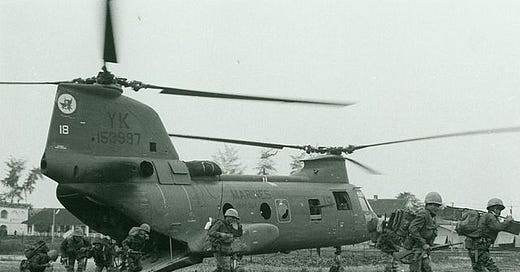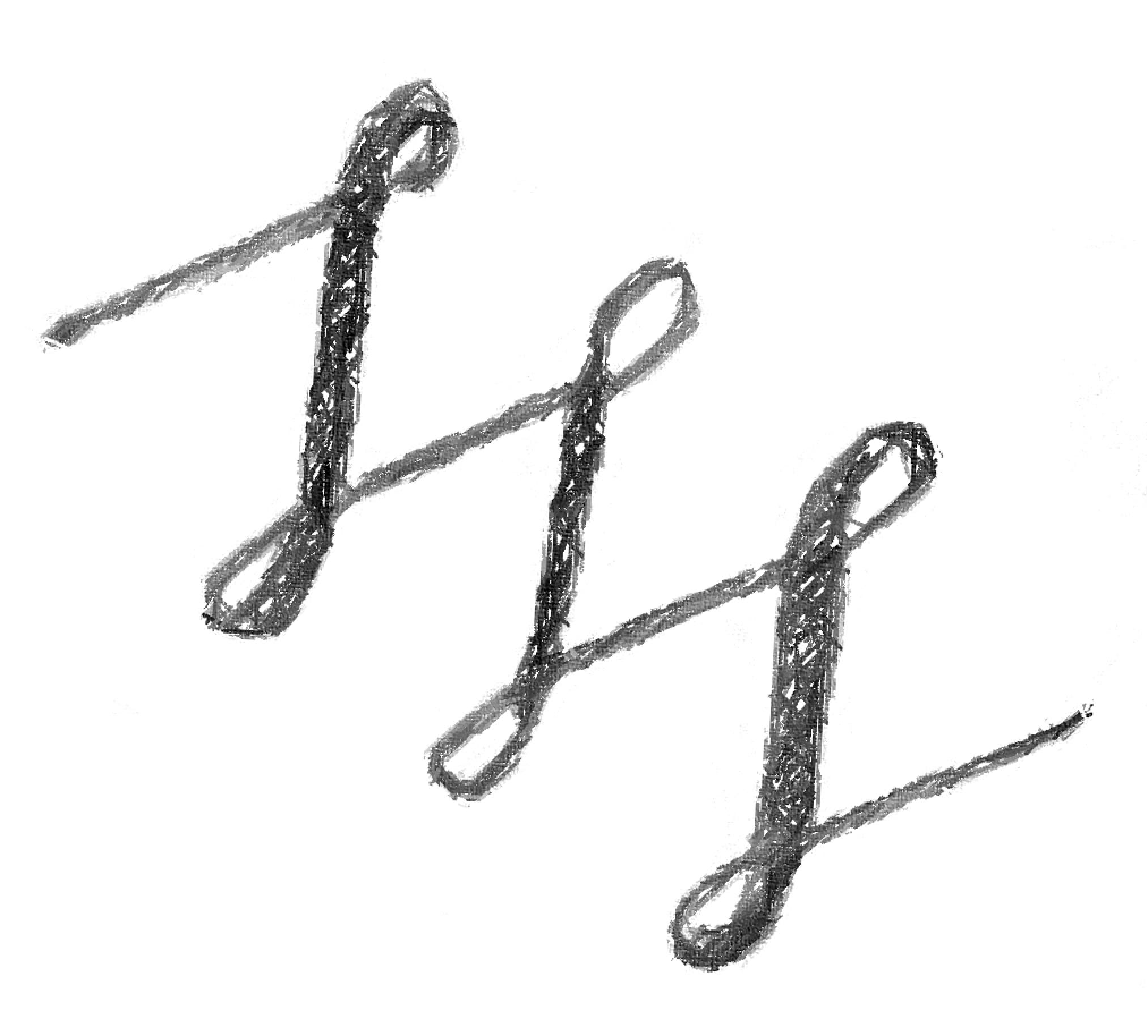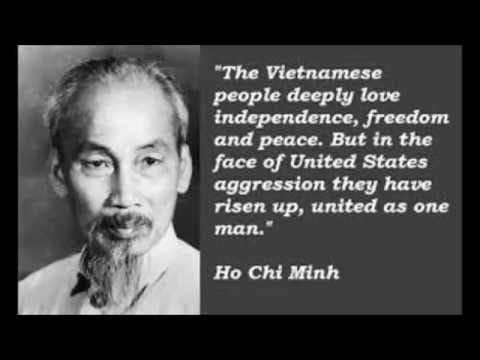Hi all,
Thank you for joining me for two songs, “Pinkville Helicopter” by Thom Parrot, and “Song for Hugh Thopson” by David Rovics. If you’d like to hear the song before you read about it, I’ve included a video below each article.
Below, you’ll find my interpretation of the lyrics which are written in italics. Comments and questions are welcome. For Japanese students, vocabulary words in bold are provided in Japanese below. TOEFL (PBT) 450+, Eiken 2, CEFR B1.
Introduction
Lieutenant Calley died on July 28, 2024. This was the headline from the New York Times on July 29th:
William L. Calley Jr., Convicted in My Lai Massacre, Is Dead at 80
Hundreds of Vietnamese civilians died at the hands of American soldiers, but Lieutenant Calley was the only one found guilty.
Today, we’ll look at what happened in My Lai through two songs, one written in 1968 by Thom Parrot, Pinkville Helicopter, and the other, Song for Hugh Thompson, written by David Rovics in 1998.
The Vietnam War was being fought when the first song was written. The U.S. did not want Vietnam to fall to the communists, so President Johnson sent the first American soldiers in 1965.
Part 1: Pinkville Helicopter
(325 words)
This song tells the story of what happened in a village called My Lai (“mee-lie”). It was in an area of Vietnam that the U.S. military called “Pinkville”. It held many communist fighters.
I will summarize the lyrics here. There are some phrases and vocabulary in the song that might be challenging.
The song mentions choppers. This is another word for helicopters.
There was a group of helicopters flying over the village of My Lai. When they looked down, they could see many, many people, including women and children, who had been killed (slaughtered), so they messaged to the headquarters about what they had seen.
One of the helicopters landed so that they could take the children to safety. They took off but saw a two-year-old baby below, so they landed again. The pilot got out and muttered (said) that the world had gone crazy because he couldn’t believe that soldiers would do something like this.
He picked up the baby and cradled it in his arms, but another soldier, a Lieutenant, told him to put the baby down and leave. The Lieutenant was carrying a gun that was still showing smoke from being fired. The pilot said that he would risk his life in order to save the child.
Then, the gunner, a soldier on the helicopter who operated the gun, told the Lieutenant, "We're calling your bluff. There's been killing enough.
If your gun starts more, mine will end it."
When someone is bluffing, they are trying to convince another person that they will do something. To call someone’s bluff means to challenge that, to say “I don’t think you’ll do it.” The gunner meant that, if the Lieutenant started shooting again, the gunner would shoot him.
They took the children to the medics, the emergency medical staff. One of the staff said war was horrible and that even babies were wounded. The pilot said that the Lieutenant had wanted that to happen.
Vocabulary
be convicted 有罪判決を受ける
massacre 虐殺
civilian 民間人
communist 共産主義者
slaughter 虐殺
mutter つぶやく
cradle 抱きしめる
gunner 砲手
Lieutenant 中尉
bluff はったり, こけ脅し
call A’s bluff (脅しているAに)やれるものならやってみろと言う(「Aの脅しには屈しない」というメッセージ)
convince 説得する
be wounded 負傷する

Part 2: Song for Hugh Thompson
(333 words)
In this song by David Rovics, we learn more details.
The pilot’s name was Hugh Thompson. He was fighting for Old Glory, another term for the Stars and Stripes, or the flag of the U.S.
He was on a lethal mission If something is lethal, it means that it could cause death.
He flew low above the village, searching for the foe (the enemy)
When he saw a wounded child on the path below
He thought this to be a sure sign that the enemy was near
In this song, the pilot thinks that the child had been shot by the enemy.
So he radioed for back-up and more choppers did appear
He called for assistance (back-up) and more helicopters came.
But when he looked for the culprits or the people responsible for the killing, he saw that they were U.S. soldiers.
The soldiers killed hundreds of people, and the bodies were everywhere (strewn) around the village. Some children were standing close together (huddled) in a small house, and the soldiers had them in their sights. In other words, the soldiers were pointing their guns at them.
Hugh Thompson said, Train your weapons on the G.I.’S To “train your weapon” on someone means to point the gun at someone or something (here, at the soldiers).
It was a fifteen-minute stand-off in a knee-deep sea of red This situation took fifteen minutes before it was over. Thompson and his crew were on one side and the U.S. soldiers were on the other. Amidst the moaning (deep crying from pain) of the dying and the silence of the dead
Hugh Thompson was a soldier and he served his country well
On the day he saved the lives of a dozen kids in hell
The massacre at My Lai was not the only one. During the war in Vietnam, there were massacres committed by U.S. military, by the North Vietnamese military, by Australian soldiers, and by soldiers from the Republic of Korea.
War is hell.
Vocabulary
lethal 致命的
foe 敵
culprit 犯人
strewn 散らばる
huddle 群がる
moan うめく
Question:
What similarities and difference do you find between these two songs?
What other questions do you have about the My Lai Massacre?
The following quote was found at https://www.antiwarsongs.org/canzone.php?id=4515&lang=en :
"I was in a wonderful cafe (Hyperion Espresso) in Fredericksburg, Virginia, when I read in the paper about this helicopter pilot who landed in My Lai near the end of this horrible massacre perpetrated upon Vietnamese peasants by American troops. I never knew until I read this article that certain American troops were also involved with finally putting an end to it. The only reason Hugh Thomson's heroic story emerged after thirty years was because the government of Vietnam was preparing to give him a medal for his actions, and the U.S. Army decided it wanted to try to avoid being upstaged." - David Rovics.
“Song for Hugh Thompson” originally appeared on the 1998 CD, We Just Want the World. In later years it appeared on the 2009 retrospective CD, Waiting for the Fall, and the 2010 CD, Troubadour: People’s History in Song. For more information, see David Rovics’ site at https://www.davidrovics.com/ .
Sources
Digital history. The Vietnam War as history: My Lai Massacre. https://www.digitalhistory.uh.edu/active_learning/explorations/vietnam/vietnam_mylai.cfm Accessed 30 July, 2024.
Karnow, Stanley. Vietnam: A history. Penguin Books, 1984.
McFadden, R. (2024, July 29). William L. Calley Jr., convicted in My Lai Massacre, is dead at 80. The New York Times. https://www.nytimes.com/2024/07/29/us/william-calley-dead.html?unlocked_article_code=1._U0.qWp8.rZXfs9OaNXDT&smid=url-share Accessed 30 July, 2024.
Public Broadcasting Service. Charlie Company and the massacre. PBS. https://www.pbs.org/wgbh/americanexperience/features/my-lai-charlie-company-and-massacre/ Accessed 30 July, 2024.
Wikimedia Foundation. (2024b, July 29). List of massacres in Vietnam. Wikipedia. https://en.wikipedia.org/wiki/List_of_massacres_in_Vietnam Accessed 30 July, 2024.
Other songs about the Vietnam War
Hole in the Ground









